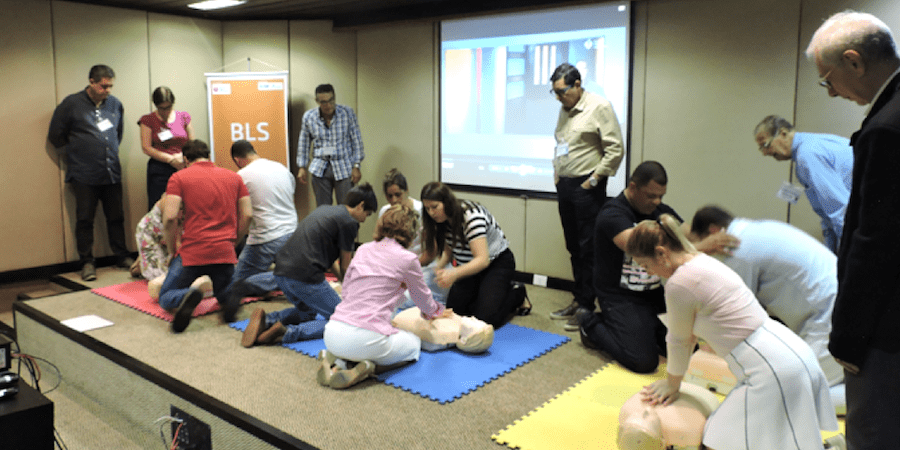
Reflections from a Norwegian lean road trip
FEATURE – Fresh from a number of visits to Norwegian gemba, the authors share their reflections and discuss the importance of making the information flow visible.
Words: Michael Ballé, Daryl Powell, and Eivind Reke
One week of non-stop gemba visits in Norway left us with many strong impressions. Lean Thinking is strong in many Norwegian manufacturing companies with a market that, due to many factors (geography being one), still prefers to buy local. This is a far cry from countries like France, where so many companies have simply “given up” and moved their production East – whether Eastern Europe or China – and are discovering now to their chagrin that without production to test engineering ideas, there can’t be smart product design. And no amount of marketing or digital innovation will save you if products don’t convince customers again and again, with their quality and affordability. Norway has not bought into this outsourcing craze. Indeed, as we drove from Stavanger to Lyngdal (a 2-hour drive), we saw many small- and medium-sized companies thriving in the most unlikely places.
The trip took us up the valleys and along the coastlines of southwest Norway and showed us unusual conditions. First of all, visited businesses that were determined to hold on to their manufacturing, as opposed to engineering products and getting them produced in lower-cost countries – or simply distributing. Secondly, our gemba trip was organized through SINTEF Manufacturing, whose focus is on helping manufacturing company (it also carries out very serious research on lean – real lean). Thirdly, we were welcomed by CEOs who listened intently, challenged thoughtfully, and genuinely considered lean’s “upside down” perspective. Indeed, most of them changed their plans and started experimenting with pull the very next Monday.
In short, we saw how things could work when people are, well, serious. As Isao Yoshino, a lifelong Toyota veteran and co-author (with Katie Anderson) of Learning to Lead, Leading to Learn, the real secret to Toyota is that there is no secret – Toyota executives and engineering are simply serious about succeeding. What we saw as we drove around could have happened anywhere, in any country, but for mostly political reasons is in fact so rare.

Our trip also left us thinking that we lean professionals must question our teaching. Every business we have visited has mastered the concept of flow. They have created material flow in their plants, moving operations in sequence where they could, and looked for ways to bring materials closer to the machines, working diligently to improve the efficiency of their material flow. However, few see that flow is just step one.
Without a deeper understanding of the information flow, it’s very hard to see where real problems arise – the kind that have a strategic impact on the business and need to be dealt with immediately. Perhaps this is something we have failed to show practitioners. In the words of Nate Furuta – “No problem, no kaizen.” This is not to say that these Norwegian companies are not solving problems. They are. But they are mostly focusing on problems as perceived by the teams – not by customers or other departments. As a result, problem-solving activities add little to the company’s competitiveness in terms of enhancing customer value or reducing the cost base.
Since the early 1990s, Toyota’s lean lessons have centered on improving the information flow by visualizing logistics more precisely: every box needs to move from spot A to spot B at a set time. This starts with controlling outbound trucks:
- Will the next truck leave at the scheduled time?
- Will it have exactly everything we promised the customer?
- Which products are easy to deliver and which are difficult?
- What problems are revealed?
This focus on precision logistics can then be pushed back step by step:
- Do we have a truck preparation area?
- Is the finished goods inventory visualized in a way that reveals why we need finished products in place, in the first place?
- Has each production cell its own finished parts supermarket?
- Do things move by Kanban or production instructions from the computer?
These very concrete questions have corresponding questions regarding quality control on the gemba:
- Is each quality check point identified? Are problems tracked?
- Is each operator aware of her own quality check points? Do they know the decisions they need to make and are there clear boundary conditions?
- Is the management chain of help reactive enough to never leave an operator alone with a problem in isolation?
This focus on precision logistics is the key to productivity because logistics is the architecture of everything we do. When something is not there when it should be, we have a choice. We can do something else, to keep the machine running and the workers working, or we can do kaizen now. Why is it not here, and what are the countermeasures? We can create a visual of all late deliveries and missing parts to better understand our lack of precision. We can choose to go through this Just-In-Time door, or we can stay outside. The world changes once we enter, but to most it seems like a dauntingly narrow door.
With this in mind, we could see that fixing the material flow often means creating a highway (or highways if there are several value streams) – but with many customized products there are also many, many side roads. The challenge in any modern business is mass customization: how we get made-to-order products to fit in the material flow, which leads straight to flexibility issues. Without clear information flow visualized by Kanban, pallets of stuff move based on either operator initiative or ERP instructions, which is not ideal if we want to understand where the real flexibility problems are.
As we talked to CEOs, we asked them to list the objectives they set for their business, and most came up with a very sensible list of things to get right. Then we asked: where are the people development objectives? This created many awkward silences and head-scratching. This isn’t a surprise: people development is still too often neglected by organizations, and few see that in order to achieve an operational objective, someone has to learn how to do it and then teamwork with other executives. At strategic level, you can ask yourself: what are your key strategic objectives and how do you plan to move from where you are today to where you want to be tomorrow, next month, next year or in 5 years’ time? Companies are often clear on the list of objectives of where they want to be but lack an associated list of people development objectives. Beyond slogans and lip-service, where is the clear connection between strategic objectives and the skills and knowledge specific people need to develop in order to achieve the strategic objectives?
This too is oddly linked to logistics. As long as we don’t see problems arise every minute because of Kanban issues or quality checkpoint issues, it will be really hard to figure out what to develop people on, and to plan for it. It's a tough call, but you may want to back off on the automation and digitalization investment decisions if you haven’t yet started to fix your logistics. If you fix logistics, chances are the investments decisions you make will be very different, even if you have already considered material flow efficiency as part of the equation.
All the companies we visited could proudly show us the value stream mapping they had done and the material flow improvements they had made thanks to it. VSM is a great tool to get started, but as we saw, it will get you only so far with Lean Thinking. VSM tends to lead us down a path that focuses on the material flow of one main product (or many products in different value streams), whereas the real business challenge is flexibility – the ability to absorb a basket of different product configurations with minimal asset investments. This is why we need to move on to MIFA – Materials and Information Flow Analysis. This Toyota tool focuses on stagnation and decision triggers, not lead-time. Paradoxically, by improving the precision of logistics through reduced stagnation (moving things more frequently in smaller batches), and creating a see, decide information flow that triggers the movement, chances are you will hit the gold mine and transform you business.
THE AUTHORS



Read more


FEATURE – The food industry is mired with problems all along the value chain. In this call to arms, the author explains why lean thinking is the only tool we have to transform it right now.


FEATURE – Visuals are a natural way in which human beings learn and teach. The author discusses why visual thinking is part of our DNA and the implications this has on our lives at work.



INTERVIEW – A cardiologist from a hospital in Salvador de Bahia explains how his department was completely transformed following the introduction of a dedicated pathway for heart patients.


ARTICLE - How can creativity and standards coexist? How do we move beyond silos? How do we fully understand the voice of the customer? Dan Jones reflects on three key questions for the lean movement.

